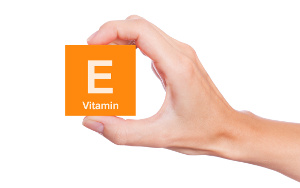Vitamin E for your cardiovascular system, fertility and immune defense
 According to an article that is published in StatPearls, vitamin E is a powerful antioxidant that protects against atherosclerosis, cardiovascular disease, and blood clots. Vitamin E is also important for fertility, cell functions, and immune defense. A low-fat diet may result in a vitamin E deficiency. You should also beware that diseases characterized by impaired lipid absorption may increase you need for vitamin E.
According to an article that is published in StatPearls, vitamin E is a powerful antioxidant that protects against atherosclerosis, cardiovascular disease, and blood clots. Vitamin E is also important for fertility, cell functions, and immune defense. A low-fat diet may result in a vitamin E deficiency. You should also beware that diseases characterized by impaired lipid absorption may increase you need for vitamin E.
Vitamin E was originally isolated from wheat germ oil in 1936. It is a lipid-soluble vitamin of vegetable origin that is primarily found in fatty foods. Vitamin E includes eight different compounds known as tocopherols and tocotrienols. Alpha-tocopherol is considered the most important type of vitamin E for humans, as this is the most common and also active form. The largest concentrations of vitamin E are found in fat tissue, adrenal glands, testicles, and uterus. The vitamin is also referred to as the fertility vitamin. According to the new article that is published in StatPearls vitamin E has the following functions:
1) Antioxidant effect
Vitamin E is an important lipid-soluble antioxidant that helps protect lipids in the cell surfaces and other types of lipids against potentially harmful free radical destruction. We are constantly exposed to free radicals, and our exposure to these compounds increase as a result of ageing, smoking, overweight, inflammation, type 2 diabetes, and other chronic diseases. It is assumed that vitamin E protects LDL cholesterol against oxidative damage, the underlying cause of atherosclerosis and ischemic heart disease, which are results of coronary occlusion.
2) Regulation of the immune defense
Vitamin E lowers the production of some hormone-like substances called type E2 prostaglandins that have a pro-inflammatory effect. Just for the record, low-grade, uncontrolled, chronic inflammation is the common thread of ageing processes and most types of chronic disease.
3) Anti-thrombotic effect
Vitamin E prevents blood platelets from aggregating and forming blood clots. The vitamin counteracts oxidative damage to LDL cholesterol at the same time as preventing platelet aggregation by reducing prostaglandin E2. This has a blood-thinning effect.
Good vitamin E sources
Vitamin E is lipid-soluble and is therefore found in dietary fats, especially vegetable source like unspoiled plant oils, nuts, kernels, seeds, whole grains, avocado, and greens such as broccoli and Brussels sprouts. You also get vitamin E from cod liver oil, cod roe, eggs, oily fish, and high-fat dairy products.
| Dietary vitamin E is spoiled by light and freezing. Oils should be stored in a dark and cool place. |
What causes a vitamin E deficiency?
Many people consume a diet with foods that are refined and processed to the degree that they are depleted of vitamin E and other nutrients. Because vitamin E is lipid-soluble, a low-fat diet only contributes with minimal amounts of the nutrient. Also, different diseases contribute to a deficiency because they cause poor absorption and utilization of lipids. For instance, patients with chronic liver ailments, cystic fibrosis, and Crohn’s disease are at risk.
In addition, many people with metabolic syndrome, which is an early stage of type 2 diabetes, have an increased need for vitamin E and other antioxidants because they are exposed to higher levels of oxidative stress caused by free radicals.
Important: Synthetic vitamin E or natural vitamin EWhen buying supplements, beware that synthetic vitamin E (with a dl in front of it) are only one third as bioavailable as natural vitamin E (with a d in front of it).
|
References
Tyler R Kemnic, Meghan Coleman. Vitamin E deficiency. StatPearls. April 28. 2020
Szaboles Péter et al. A Systematic Review og Global Alpha-Tocopherol Status as Assed by Nutritional Intake Levels and Blood Serum Concentrations. Int J. Vit Res
https://netdoktor.dk/vitaminer/vitamine.htm
Search for more information...
- Created on .








